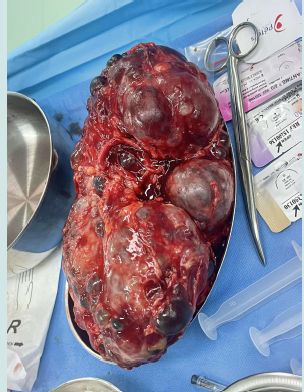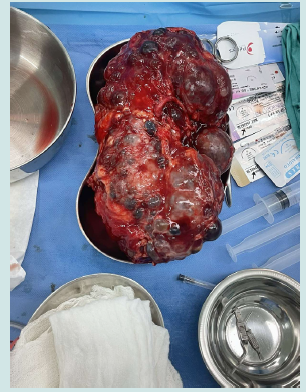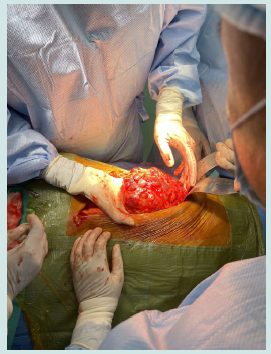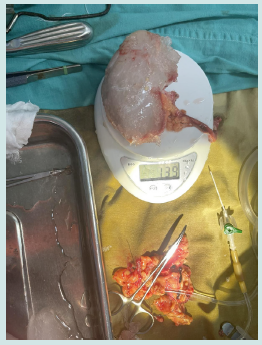
Lupine Publishers Group
Lupine Publishers
Menu
ISSN: 2690-5760
Research ArticleOpen Access 
Knowledge & Attitude Towards Home Based Dialysis Therapy in Myanmar: The Way Forward! Volume 5 - Issue 2
Khin Phyu Pyar1*, Moe Zaw Myint2, Moe Htun Zaw3, Aung Phyoe Kyaw4, Kyaw Thu Yein Lwin3, Lay Maung Maung3, Ye Min Hein3, Lynn Htet Aung3, Myo Maung Maung3, Sai Aik Hla2, Soe Win Hlaing2, Aung Aung2, Zar Ni Htet Aung4, Nyan Lin Maung4, Soe Min Aung4, Thurein Win4, Han Lin Aung4, Kyaw Thet Maung4, Sai Su Phone4, Kyaw Zay Ya4, Zay Phyo Aung4, Myo Thant Kyaw4, Zaw Lin Oo4, Sit Min4, Htet Paing Aung4 and Thein Aung Moe4
- 1Professor and Head/ Senior Consultant Physician and Nephrologist, Department of Medicine/Nephrology, Defence Services Medical Academy/ No. (1) Defence Services General Hospital (1000-Bedded), Yangon, Myanmar
- 2Senior Consultant Physician, No. (1) Defence Services General Hospital (1000-Bedded), Yangon, Myanmar
- 3Consultant Nephrologist, Department of Nephrology, No. (1) Defence Services General Hospital (1000-Bedded), Yangon, Myanmar
- 4Consultant Physician, No. (1) Defence Services General Hospital (1000-Bedded), Yangon, Myanmar
Received: April 11, 2023 Published: April 25, 2023
Corresponding author: Khin Phyu Pyar, Professor and Head/ Senior Consultant Physician and Nephrologist, Department of Medicine/ Nephrology, Defence Services Medical Academy/ No. (1) Defence Services General Hospital (1000-Bedded), Yangon, Myanmar
DOI: 10.32474/JCCM.2023.05.000212
Case Summary
38-year-old female with adult polycystic kidney disease had end stage renal disease. She underwent pre-emptive renal transplant from living non-related donor. At the same time, she had right nephrectomy. This case presented advantages of pre-emptive renal transplant as well as doing native unilateral nephrectomy simultaneously at the time of transplant.
Keywords: Adult polycystic kidney disease; nephrectomy; pre-emptive renal transplant
Introduction
Adult polycystic kidney disease (ADPCKD) is one of the leading causes of end stage renal disease requiring renal replacement therapy. Among different modalities of renal replacement, renal transplant is the best for them. The common age of onset for end stage renal disease (ESRD) in patients with polycystic kidney disease is over fifty.
“Whether the patient with ADPCKD with ESRD need bilateral nephrectomy or unilateral nephrectomy or no nephrectomy” is debatable. Sequence for doing nephrectomy (bilateral or unilateral) and kidney transplantation in ADPCKD with ESRD, simultaneous procedure or two stage procedure, has several controversial issues. Timing of renal transplant in cases with ADPKD with ESRD is still a matter of great controversy. Earlier transplantation (pre-emptive kidney transplant) (PEKT) was not associated with better patient or graft survival [1]; PEKT caused premature operative risks to both donor and recipient as well as wasted the native kidney function of recipients. However, the majority supported PEKT; enhancing patient and graft survival.
Case Presentation
38-year-old female with adult polycystic kidney disease (ADPCKD) with end stage renal disease underwent right nephrectomy and pre-emptive renal transplant from living donor simultaneously. The patient had intermittent painless hematuria for 20 years and she was found to have ADPCKD; her mother and 2 sisters had same disease too. Her serum was abnormal after delivery of baby, born by cesarian session; it gradually increased over 7 years. She was in CKD Stage V for 2 years; she did not undergo maintenance hemodialysis. Regarding living donor, ‘Ethical Committee’ generally allows kidney donation among family members. The patient has 2 sisters; their age were 44 years and 42 years. They all had polycystic kidney diseases with normal serum creatinine. Therefore, ‘Ethical Committee’ permits the donation from unrelated person (Figure 1).
The patient had anemia; blood pressure 140/90 mmHg; hemoglobin 10 gm%. Ultrasonogram revealed large polycystic kidneys with no cyst in liver nor pancreas. Her serum creatinine was 8 mg%. CDC cross match was negative. Tissue typing (Luminux) revealed B76-CREG-1774MFI; DRB52-DSA-851MFI. Therefore, Basiliximab was given as induction therapy; she received methyl prednisolone, tacrolimus and mycophenolate mofetil according to protocol. She underwent right nephrectomy first as urosurgeon selected right iliac fossa for graft kidney; it lasted 90 minutes. Then, grafting of new kidney was done; total transplant time was 46 minutes 73 sec (cold ischemic time minutes 16 minutes 23 sec; first warm ischemic time 6 minutes 36 sec; second warm ischemic time 22 minutes 14 sec). The whole surgery- right nephrectomy and transplant caused 120 minutes total. The surgery was uneventful.
In immediate post-transplant period, there was no features of disequilibrium syndrome; headache, confusion, irritability or fits. Her daily urine output was 3liters to 5 liters; her residual urine output was 2.0 liters per day. Blood pressure was 140/90 mmHg; her pretransplant blood pressure was 130/75 mmHg and she did not need anti-hypertensive drugs. Her hemoglobin was Hb 9.5 gm%; TWBC was 6.3 X 109 /L; Platelet count was 287 X 109 /L. Blood urea was 155.8 mmol/L; serum creatinine was 8.02 mg%; total protein was 6.2 gm/dl; albumin was 3.9 gm/dl; uric acid was 3.2 mg/dl; phosphate was 5.29 mg/dl; calcium was 8.09 mg/dl; ALT was 8.5 U/l; AST was 18.3 U/l; alkaline phosphate was 65 IU/l; TSH was 0.112 m IU/l; , T3 was 3.71 nmol/l; , T4 was 12.44 nmol/l; and HbA1C was 4.9%. Urine ACR was 0.203 mg/mmol (< 0.03); in urine microscopy pus cell was 0 -2 /hpf and urine culture was sterile. In post-operative period, her urine out-put was 4-5 liters/day; serum creatine was normal on post-transplant ‘Day 7’ (Figure 2).
Discussion
The patient had living non-related donor kidney. She had 3 siblings; all had polycystic kidney disease. At present, the ethical board in Myanmar usually allows permission for kidney donation among family members and first-degree relatives; it has few exceptions like patient with no close relatives. The academic board requested to allow donation for non-related donor as all the siblings had ADPCKD. This patient highlighted the ethical and legal aspects of renal transplant in living non-related donors in ADPCKD with ESRD. The common age of onset for end stage renal disease in patients with polycystic kidney disease is over fifty; this patient had one decade earlier. It may be due to local complications: hematuria at teen age and urinary tract infection (Figure 3).
“Whether the patient with ADPCKD with ESRD need bilateral nephrectomy or unilateral nephrectomy or no nephrectomy” is debatable. The patient was very thin, BMI 18.4 kg/m2. Therefore, she required a space in right iliac fossa for graft kidney. Doing native right nephrectomy was really indicated as it was big; longest length of her right kidney was 31 cm as in photo ‘2 and 3’. One study which involved 40 patients with ADPCKD with ESRD confirmed that the kidney volume significantly reduced one year after kidney transplantation; therefore, asymptomatic patients (no local symptoms) did not require prophylactic bilateral nephrectomy [2]. A restrictive nephrectomy policy should be applied for kidney transplantation in patients with ADPCKD with ESRD, only a part of them need a native nephrectomy [3]. Prophylactic native nephrectomy is indicated if they had history of cyst infection or recurrent haemorrhage or to those in whom space must be made to implant the graft [4] (Figure 4).
The sequence for doing nephrectomy (bilateral or unilateral) and kidney transplantation in ADPCKD with ESRD, simultaneous procedure or two stage procedure, has several controversial issues. Some favored two stage procedure. The ideal timing of native nephrectomy is not settled, and several factors determine the choice of nephrectomy timing, including the presence of pressure symptoms, residual diuresis, and adequate space for the graft and living (not deceased) kidney donation. Simultaneous nephrectomy together with transplantation was rarely performed [3]; one of the reasons for case presentation. Doing two surgical procedures under one umbrella of anaesthesia was good as it saved time and money. Extent of exposure to local and general anesthetic drugs was less in simultaneous native nephrectomy and transplant than prior nephrectomy followed by transplant. Furthermore, it saved health care personnel. However, the total duration of surgery was longer than one procedure. Prophylactic native nephrectomy is restricted to patients with a history of cyst infection or recurrent haemorrhage or to those in whom space must be made to implant the graft [4].
The patient had simultaneous procedure; right native nephrectomy and transplant. Total operation time was two hours; twenty minutes longer than that of usual living donor transplant. The whole surgery and post operative period were uneventful. Therefore, this case gave another evidence to ‘pearls’ of simultaneous approach. Bilateral nephrectomy prior to kidney transplantation is a safe, controlled approach carrying minimal complication and mortality rates and facilitating a subsequent transplant procedure without mechanical or hemodynamic limitations for the graft [5]. However, the majority found that simultaneous approach had potential cost savings with no adverse outcomes [6-9]. Moreover, short- and long-term graft survival in those who had simultaneous approach was not inferior to nonsimultaneous approach. Simultaneous unilateral nephrectomy does not have a negative effect on patient and graft survival in patients with ADPKD; it is associated with low morbidity. Pretransplant nephrectomy should be restricted only to highly symptomatic patients, whereas unilateral nephrectomy in asymptomatic patients should be performed during kidney transplantation only if massive kidney size precludes graft positioning [2].
Timing of renal transplant in cases with ADPKD with ESRD is still a matter of great controversy. Earlier transplantation was not associated with better patient or graft survival [1]; pre-emptive kidney transplant (PEKT) caused premature operative risks to both donor and recipient as well as wasted the native kidney function of recipients. However, the majority supported PEKT; enhancing patient and graft survival; dialysis avoidance [10]; reduction in the risk of acute rejection and graft loss in children (Rana Magar et al., n.d.); and better drug compliance. This patient underwent PEKT with living non-related donor; therefore, she had dialysis avoidance.
Pre-emptive kidney transplant (PEKT) is recommended for adults with end-stage kidney disease Several studies compared the outcome of PEKT and post-dialysis transplant [11] (Phongphithakchai et al., n.d.). Meta-analysis showed the potential benefits of PEKT; patient and graft survival [12]. This patient was one of the examples showing advantages of PEKT in low resource setting; it was cost-saving. It was found to be associated with having a living kidney donor and with having a higher estimated glomerular filtration rate at listing for deceased donor recipients [13]. This patient had PEKT living-non related as all her siblings were having polycystic kidneys on donor screening. HE among patients and health care personnel should be promoted to improve awareness of PEKT [14].
Doing preemptive renal transplant has several pros and cons. Good point was that not exposing hemodialysis. On the other hand, bad view was at cellular level; adjustment/adaptation of metabolism. Rapid correction of metabolic acidosis at intravascular compartment, cellular level and cerebro-spinal fluid may lead to confusion etc. In this patient, the electrolytes were normal; there was no features suggestive of dialysis disequilibrium syndrome (DDS). DDS is characterized by acute neurological manifestations in patients undergoing first dialysis treatment. The mechanisms for the development of DDS include the reverse urea effect, transient intracranial acidosis, and idiogenic osmoles which can increase intracellular osmolality and promote water movement into the brain. DDS in child following PEKT was reported from some transplant centers [15-17].
Conclusion
PEKT in ADPCKD with ESRD is feasible particularly with living donor; it has good clinical outcome. Simultaneous native unilateral nephrectomy and renal transplant is safe and cost effective. Indication for native nephrectomy as well as sequence for doing native nephrectomy and transplant should be considered with individualized approach. Regarding timing of renal transplant in cases with ADPKD with ESRD, PEKT is the best with living donor.
Acknowledgements
The authors would like to thank the patient and family for giving consent to this article. Also, to all doctors and nursing team for making great efforts in caring her. The authors acknowledged the following team; Professor Than Aye and Urosurgical team, Professor Yu Aye Latt and ICU team, Professor Myint Zaw, Professor Thet Naing, Professor Kyaw Zay Ya and Professor Ko Ko Lwin for administrative support.
Declaration of conflict of interest
The authors declared no potential conflicts of interests with respect to authorship and publication of this article.
Ethical Approval
Our institution does not require ethical approval for reporting cases.
Funding
The authors received no financial support for publication of this article.
Informed Consent
The informed consent for publication in this article was obtained from both recipient and donor.
References
- Grams ME, Massie AB, Coresh J, Segev DL (2011) Trends in the timing of pre-emptive kidney transplantation. Journal of the American Society of Nephrology 22(9): 1615-1620.
- Veroux M, Zerbo D, Basile G, Gozzo C, Sinagra N, et al. (2016) Simultaneous Native Nephrectomy and Kidney Transplantation in Patients With Autosomal Dominant Polycystic Kidney Disease. PLOS ONE 11(6): e0155481-e0155485.
- Casteleijn NF, Geertsema P, Koorevaar IW, Inkelaar FDJ, Jansen MR, et al. (2023) The Need for Routine Native Nephrectomy in the Workup for Kidney Transplantation in Autosomal Dominant Polycystic Kidney Disease Patients. Urologia Internationalis 107(2): 148-156.
- Kanaan N, Devuyst O, Pirson Y (2014) Renal transplantation in autosomal dominant polycystic kidney disease. Nature Reviews. Nephrology 10(8): 455-465.
- Alkaissy RTS, Schaapherder AFM, Baranski AG, Dubbeld J, Braat AE, et al. (2020) Timing of Nephrectomy and Renal Transplantation in Patients with Autosomal Dominant Polycystic Kidney Disease (ADPKD) in the Era of Living Kidney Donation. Transplantology 1(1): 43-54.
- Rasmussen A, Levine M, Mandurah M, Sener A, Luke P (2022) Staged vs. Simultaneous bilateral nephrectomy and kidney transplantation in patients with autosomal dominant polycystic kidney disease: Outcomes and cost. Canadian Urological Association Journal 16(12): 424-429.
- Darius T, Bertoni S, De Meyer M, Buemi A, Devresse A, et al. (2022) Simultaneous nephrectomy during kidney transplantation for polycystic kidney disease does not detrimentally impact comorbidity and graft survival. World Journal of Transplantation 12(5): 100-111.
- Bhutani G, Astor BC, Mandelbrot DA, Mankowski Gettle L, Ziemlewicz T, et al. (2021) Long-Term Outcomes and Prognostic Factors in Kidney Transplant Recipients with Polycystic Kidney Disease. Kidney360 2(2): 312-324.
- Mohamed E Elrggala, Hoda MM Abd Elazizb, Mohammed A Gawada, Hussein A Sheashaac (2020) Native nephrectomy in kidney transplantation, when, why, and how?. Ann Clin Nephrol 4(4): 102-105.
- Van Dellen D, Burnapp L, Citterio F, Mamode N, Moorlock G, et al. (2021) Pre-emptive live donor kidney transplantation-moving barriers to opportunities: An ethical, legal and psychological aspects of organ transplantation view. World Journal of Transplantation 11(4): 88-98.
- Abramowicz D, Hazzan M, Maggiore U, Peruzzi L, Cochat P, et al. (2016) Does pre-emptive transplantation versus post start of dialysis transplantation with a kidney from a living donor improve outcomes after transplantation? A systematic literature review and position statement by the Descartes Working Group and ERBP. Nephrology Dialysis Transplantation 31(5): 691-697.
- Azegami T, Kounoue N, Sofue T, Yazawa M, Tsujita M, et al. (2023) Efficacy of pre-emptive kidney transplantation for adults with end-stage kidney disease: A systematic review and meta-analysis. Renal Failure 45(1): 2169618-2169625.
- Yishak AA, Rubenstein K, Clark ED, Bhatia M, Vupputuri S (2022) Early Referral, Living Donation, and Preemptive Kidney Transplant. Transplantation Proceedings 54(3): 615-621.
- Fishbane S, Nair V (2018) Opportunities for Increasing the Rate of Preemptive Kidney Transplantation. Clinical Journal of the American Society of Nephrology 13(8): 1280-1282.
- Alkandari O, Al Fares F, Nair P, Mahmoud TH, Yagan JA, et al. (2021) Seizures in a Child Post Renal Transplant: A Case of Disequilibrium Syndrome. Saudi Journal of Kidney Diseases and Transplantation 32(3): 861-864.
- Kakajiwala A, Weiss S, Lopez S, Palmer J, Baluarte HJ (2017) Cerebral Edema in a Child after Preemptive Kidney Transplantation. Journal of Pediatric Intensive Care 6(2): 123-126.
- Veroux M, Gozzo C, Corona D, Murabito P, Caltabiano DC, et al. (2018) Change in kidney volume after kidney transplantation in patients with autosomal polycystic kidney disease. PloS One 13(12): e0209332-e0209335.

Top Editors
-

Mark E Smith
Bio chemistry
University of Texas Medical Branch, USA -

Lawrence A Presley
Department of Criminal Justice
Liberty University, USA -

Thomas W Miller
Department of Psychiatry
University of Kentucky, USA -

Gjumrakch Aliev
Department of Medicine
Gally International Biomedical Research & Consulting LLC, USA -

Christopher Bryant
Department of Urbanisation and Agricultural
Montreal university, USA -

Robert William Frare
Oral & Maxillofacial Pathology
New York University, USA -

Rudolph Modesto Navari
Gastroenterology and Hepatology
University of Alabama, UK -

Andrew Hague
Department of Medicine
Universities of Bradford, UK -

George Gregory Buttigieg
Maltese College of Obstetrics and Gynaecology, Europe -

Chen-Hsiung Yeh
Oncology
Circulogene Theranostics, England -
.png)
Emilio Bucio-Carrillo
Radiation Chemistry
National University of Mexico, USA -
.jpg)
Casey J Grenier
Analytical Chemistry
Wentworth Institute of Technology, USA -
Hany Atalah
Minimally Invasive Surgery
Mercer University school of Medicine, USA -

Abu-Hussein Muhamad
Pediatric Dentistry
University of Athens , Greece

The annual scholar awards from Lupine Publishers honor a selected number Read More...








